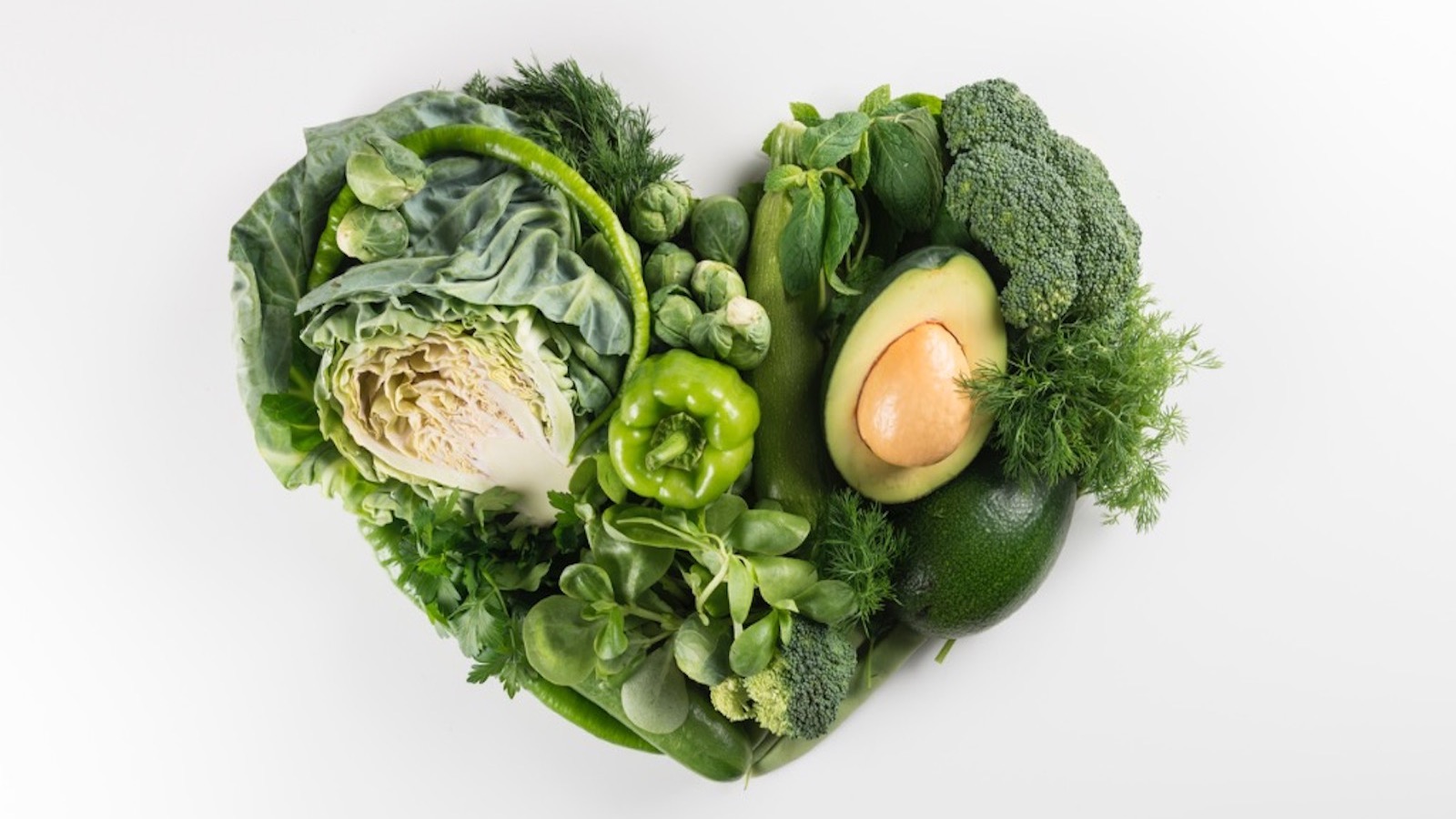
Ravi Ghanta, MD
Honors, Awards and Memberships
Publications
4862227
AFDZBLNB
1
alternatives-to-animal-experimentation
10
date
desc
Ghanta
38859
https://www.texasheart.org/wp-content/plugins/zotpress/
%7B%22status%22%3A%22success%22%2C%22updateneeded%22%3Afalse%2C%22instance%22%3Afalse%2C%22meta%22%3A%7B%22request_last%22%3A0%2C%22request_next%22%3A0%2C%22used_cache%22%3Atrue%7D%2C%22data%22%3A%5B%7B%22key%22%3A%22QM7693N6%22%2C%22library%22%3A%7B%22id%22%3A4862227%7D%2C%22meta%22%3A%7B%22creatorSummary%22%3A%22Mankidy%20et%20al.%22%2C%22parsedDate%22%3A%222023-08%22%2C%22numChildren%22%3A1%7D%2C%22bib%22%3A%22%3Cdiv%20class%3D%5C%22csl-bib-body%5C%22%20style%3D%5C%22line-height%3A%201.35%3B%20padding-left%3A%201em%3B%20text-indent%3A-1em%3B%5C%22%3E%5Cn%20%20%3Cdiv%20class%3D%5C%22csl-entry%5C%22%3EMankidy%2C%20B.%20J.%2C%20Mohammad%2C%20G.%2C%20Trinh%2C%20K.%20et%20al.%20%282023%29.%20High%20risk%20lung%20nodule%3A%20A%20multidisciplinary%20approach%20to%20diagnosis%20and%20management.%20%3Ci%3ERespir%20Med%3C%5C%2Fi%3E%20%3Ci%3E214%3C%5C%2Fi%3E%2C%20107277.%20%3Ca%20class%3D%27zp-DOIURL%27%20href%3D%27https%3A%5C%2F%5C%2Fdoi.org%5C%2F10.1016%5C%2Fj.rmed.2023.107277%27%3Ehttps%3A%5C%2F%5C%2Fdoi.org%5C%2F10.1016%5C%2Fj.rmed.2023.107277%3C%5C%2Fa%3E.%3C%5C%2Fdiv%3E%5Cn%3C%5C%2Fdiv%3E%22%2C%22data%22%3A%7B%22itemType%22%3A%22journalArticle%22%2C%22title%22%3A%22High%20risk%20lung%20nodule%3A%20A%20multidisciplinary%20approach%20to%20diagnosis%20and%20management%22%2C%22creators%22%3A%5B%7B%22creatorType%22%3A%22author%22%2C%22firstName%22%3A%22Babith%20J.%22%2C%22lastName%22%3A%22Mankidy%22%7D%2C%7B%22creatorType%22%3A%22author%22%2C%22firstName%22%3A%22GhasemiRad%22%2C%22lastName%22%3A%22Mohammad%22%7D%2C%7B%22creatorType%22%3A%22author%22%2C%22firstName%22%3A%22Kelly%22%2C%22lastName%22%3A%22Trinh%22%7D%2C%7B%22creatorType%22%3A%22author%22%2C%22firstName%22%3A%22Anoop%20P.%22%2C%22lastName%22%3A%22Ayyappan%22%7D%2C%7B%22creatorType%22%3A%22author%22%2C%22firstName%22%3A%22Quillan%22%2C%22lastName%22%3A%22Huang%22%7D%2C%7B%22creatorType%22%3A%22author%22%2C%22firstName%22%3A%22Steven%22%2C%22lastName%22%3A%22Bujarski%22%7D%2C%7B%22creatorType%22%3A%22author%22%2C%22firstName%22%3A%22Mohammad%20S.%22%2C%22lastName%22%3A%22Jafferji%22%7D%2C%7B%22creatorType%22%3A%22author%22%2C%22firstName%22%3A%22Ravi%22%2C%22lastName%22%3A%22Ghanta%22%7D%2C%7B%22creatorType%22%3A%22author%22%2C%22firstName%22%3A%22Alexander%20N.%22%2C%22lastName%22%3A%22Hanania%22%7D%2C%7B%22creatorType%22%3A%22author%22%2C%22firstName%22%3A%22Donald%20R.%22%2C%22lastName%22%3A%22Lazarus%22%7D%5D%2C%22abstractNote%22%3A%22Pulmonary%20nodules%20are%20often%20discovered%20incidentally%20during%20CT%20scans%20performed%20for%20other%20reasons.%20While%20the%20vast%20majority%20of%20nodules%20are%20benign%2C%20a%20small%20percentage%20may%20represent%20early-stage%20lung%20cancer%20with%20the%20potential%20for%20curative%20treatments.%20With%20the%20growing%20use%20of%20CT%20for%20both%20clinical%20purposes%20and%20lung%20cancer%20screening%2C%20the%20number%20of%20pulmonary%20nodules%20detected%20is%20expected%20to%20increase%20substantially.%20Despite%20well-established%20guidelines%2C%20many%20nodules%20do%20not%20receive%20proper%20evaluation%20due%20to%20a%20variety%20of%20factors%2C%20including%20inadequate%20coordination%20of%20care%20and%20financial%20and%20social%20barriers.%20To%20address%20this%20quality%20gap%2C%20novel%20approaches%20such%20as%20multidisciplinary%20nodule%20clinics%20and%20multidisciplinary%20boards%20may%20be%20necessary.%20As%20pulmonary%20nodules%20may%20indicate%20early-stage%20lung%20cancer%2C%20it%20is%20crucial%20to%20adopt%20a%20risk-stratified%20approach%20to%20identify%20potential%20lung%20cancers%20at%20an%20early%20stage%2C%20while%20minimizing%20the%20risk%20of%20harm%20and%20expense%20associated%20with%20over%20investigation%20of%20low-risk%20nodules.%20This%20article%2C%20authored%20by%20multiple%20specialists%20involved%20in%20nodule%20management%2C%20delves%20into%20the%20diagnostic%20approach%20to%20lung%20nodules.%20It%20covers%20the%20process%20of%20determining%20whether%20a%20patient%20requires%20tissue%20sampling%20or%20continued%20surveillance.%20Additionally%2C%20the%20article%20provides%20an%20in-depth%20examination%20of%20the%20various%20biopsy%20and%20therapeutic%20options%20available%20for%20malignant%20lung%20nodules.%20The%20article%20also%20emphasizes%20the%20significance%20of%20early%20detection%20in%20reducing%20lung%20cancer%20mortality%2C%20especially%20among%20high-risk%20populations.%20Furthermore%2C%20it%20addresses%20the%20creation%20of%20a%20comprehensive%20lung%20nodule%20program%2C%20which%20involves%20smoking%20cessation%2C%20lung%20cancer%20screening%2C%20and%20systematic%20evaluation%20and%20follow-up%20of%20both%20incidental%20and%20screen-detected%20nodules.%22%2C%22date%22%3A%222023-08%22%2C%22language%22%3A%22eng%22%2C%22DOI%22%3A%2210.1016%5C%2Fj.rmed.2023.107277%22%2C%22ISSN%22%3A%221532-3064%22%2C%22url%22%3A%22%22%2C%22collections%22%3A%5B%22AFDZBLNB%22%2C%22NTAHPDUG%22%2C%224U5B8N6T%22%5D%2C%22dateModified%22%3A%222023-06-08T13%3A54%3A21Z%22%7D%7D%2C%7B%22key%22%3A%22MVSV2XRA%22%2C%22library%22%3A%7B%22id%22%3A4862227%7D%2C%22meta%22%3A%7B%22creatorSummary%22%3A%22Sylvester%20et%20al.%22%2C%22parsedDate%22%3A%222023-07%22%2C%22numChildren%22%3A1%7D%2C%22bib%22%3A%22%3Cdiv%20class%3D%5C%22csl-bib-body%5C%22%20style%3D%5C%22line-height%3A%201.35%3B%20padding-left%3A%201em%3B%20text-indent%3A-1em%3B%5C%22%3E%5Cn%20%20%3Cdiv%20class%3D%5C%22csl-entry%5C%22%3ESylvester%2C%20C.%20B.%2C%20Ryan%2C%20C.%20T.%2C%20Frankel%2C%20W.%20C.%20et%20al.%20%282023%29.%20Readmissions%20after%20surgical%20aortic%20valve%20replacement%3A%20influence%20of%20prosthesis%20type.%20%3Ci%3EJ%20Surg%20Res%3C%5C%2Fi%3E%20%3Ci%3E287%3C%5C%2Fi%3E%2C%20124%26%23x2013%3B133.%20%3Ca%20class%3D%27zp-DOIURL%27%20href%3D%27https%3A%5C%2F%5C%2Fdoi.org%5C%2F10.1016%5C%2Fj.jss.2023.01.007%27%3Ehttps%3A%5C%2F%5C%2Fdoi.org%5C%2F10.1016%5C%2Fj.jss.2023.01.007%3C%5C%2Fa%3E.%3C%5C%2Fdiv%3E%5Cn%3C%5C%2Fdiv%3E%22%2C%22data%22%3A%7B%22itemType%22%3A%22journalArticle%22%2C%22title%22%3A%22Readmissions%20after%20surgical%20aortic%20valve%20replacement%3A%20influence%20of%20prosthesis%20type%22%2C%22creators%22%3A%5B%7B%22creatorType%22%3A%22author%22%2C%22firstName%22%3A%22Christopher%20B.%22%2C%22lastName%22%3A%22Sylvester%22%7D%2C%7B%22creatorType%22%3A%22author%22%2C%22firstName%22%3A%22Christopher%20T.%22%2C%22lastName%22%3A%22Ryan%22%7D%2C%7B%22creatorType%22%3A%22author%22%2C%22firstName%22%3A%22William%20C.%22%2C%22lastName%22%3A%22Frankel%22%7D%2C%7B%22creatorType%22%3A%22author%22%2C%22firstName%22%3A%22Rodrigo%22%2C%22lastName%22%3A%22Zea-Vera%22%7D%2C%7B%22creatorType%22%3A%22author%22%2C%22firstName%22%3A%22Qianzi%22%2C%22lastName%22%3A%22Zhang%22%7D%2C%7B%22creatorType%22%3A%22author%22%2C%22firstName%22%3A%22Matthew%20J.%22%2C%22lastName%22%3A%22Wall%22%7D%2C%7B%22creatorType%22%3A%22author%22%2C%22firstName%22%3A%22Marc%20R.%22%2C%22lastName%22%3A%22Moon%22%7D%2C%7B%22creatorType%22%3A%22author%22%2C%22firstName%22%3A%22Joseph%20S.%22%2C%22lastName%22%3A%22Coselli%22%7D%2C%7B%22creatorType%22%3A%22author%22%2C%22firstName%22%3A%22Todd%20K.%22%2C%22lastName%22%3A%22Rosengart%22%7D%2C%7B%22creatorType%22%3A%22author%22%2C%22firstName%22%3A%22Subhasis%22%2C%22lastName%22%3A%22Chatterjee%22%7D%2C%7B%22creatorType%22%3A%22author%22%2C%22firstName%22%3A%22Ravi%20K.%22%2C%22lastName%22%3A%22Ghanta%22%7D%5D%2C%22abstractNote%22%3A%22INTRODUCTION%3A%20Prosthesis%20choice%20during%20aortic%20valve%20replacement%20%28AVR%29%20weighs%20lifelong%20anticoagulation%20with%20mechanical%20valves%20%28M-AVR%29%20against%20structural%20valve%20degeneration%20in%20bioprosthetic%20valves%20%28B-AVR%29.%5CnMETHODS%3A%20The%20Nationwide%20Readmissions%20Database%20was%20queried%20to%20identify%20patients%20who%20underwent%20isolated%20surgical%20AVR%20between%20January%201%2C%202016%20and%20December%2031%2C%202018%2C%20stratifying%20by%20prothesis%20type.%20Propensity%20score%20matching%20was%20used%20to%20compare%20risk-adjusted%20outcomes.%20Readmission%20at%201%5Cu00a0y%20was%20estimated%20with%20Kaplan-Meier%20%28KM%29%20analysis.%5CnRESULTS%3A%20Patients%20%28n%5Cu00a0%3D%5Cu00a0109%2C744%29%20who%20underwent%20AVR%20%2890%2C574%20B-AVR%20and%2019%2C170%20M-AVR%29%20were%20included.%20B-AVR%20patients%20were%20older%20%28median%2068%20versus%2057%5Cu00a0y%3B%20P%5Cu00a0%3C%5Cu00a00.001%29%20and%20had%20more%20comorbidities%20%28mean%20Elixhauser%20score%3A%2011.8%20versus%2010.7%3B%20P%5Cu00a0%3C%5Cu00a00.001%29%20compared%20to%20M-AVR%20patients.%20After%20matching%20%28n%5Cu00a0%3D%5Cu00a036%2C951%29%2C%20there%20was%20no%20difference%20in%20age%20%2858%20versus%2057%5Cu00a0y%3B%20P%5Cu00a0%3D%5Cu00a00.6%29%20and%20Elixhauser%20score%20%2811.0%20versus%2010.8%3B%20P%5Cu00a0%3D%5Cu00a00.3%29.%20B-AVR%20patients%20had%20similar%20in-hospital%20mortality%20%282.3%25%20versus%202.3%25%3B%20P%5Cu00a0%3D%5Cu00a00.9%29%20and%20cost%20%28mean%3A%20%2450%2C958%20versus%20%2451%2C200%3B%20P%5Cu00a0%3D%5Cu00a00.4%29%20compared%20with%20M-AVR%20patients.%20However%2C%20B-AVR%20patients%20had%20shorter%20length%20of%20stay%20%288.3%20versus%208.7%5Cu00a0d%3B%20P%5Cu00a0%3C%5Cu00a00.001%29%20and%20fewer%20readmissions%20at%2030%5Cu00a0d%20%2810.3%25%20versus%2012.6%25%3B%20P%5Cu00a0%3C%5Cu00a00.001%29%20and%2090%5Cu00a0d%20%2814.8%25%20versus%2017.8%25%3B%20P%5Cu00a0%3C%5Cu00a00.001%29%2C%20and%201%5Cu00a0y%20%28P%5Cu00a0%3C%5Cu00a00.001%2C%20KM%20analysis%29.%20Patients%20undergoing%20B-AVR%20were%20less%20likely%20to%20be%20readmitted%20for%20bleeding%20or%20coagulopathy%20%285.7%25%20versus%209.9%25%3B%20P%5Cu00a0%3C%5Cu00a00.001%29%20and%20effusions%20%289.1%25%20versus%2011.9%25%3B%20P%5Cu00a0%3C%5Cu00a00.001%29.%5CnCONCLUSIONS%3A%20B-AVR%20patients%20had%20similar%20early%20outcomes%20compared%20to%20M-AVR%20patients%2C%20but%20lower%20rates%20of%20readmission.%20Bleeding%2C%20coagulopathy%2C%20and%20effusions%20are%20drivers%20of%20excess%20readmissions%20in%20M-AVR%20patients.%20Readmission%20reduction%20strategies%20targeting%20bleeding%20and%20improved%20anticoagulation%20management%20are%20warranted%20in%20the%20first%20year%20following%20AVR.%22%2C%22date%22%3A%222023-07%22%2C%22language%22%3A%22eng%22%2C%22DOI%22%3A%2210.1016%5C%2Fj.jss.2023.01.007%22%2C%22ISSN%22%3A%221095-8673%22%2C%22url%22%3A%22%22%2C%22collections%22%3A%5B%22BJSZ96GT%22%2C%22BCTBZ4XB%22%2C%22VCK5HVUS%22%2C%22AFDZBLNB%22%2C%22VKADJP5D%22%2C%22BNSCCUCI%22%5D%2C%22dateModified%22%3A%222023-06-08T14%3A14%3A12Z%22%7D%7D%2C%7B%22key%22%3A%22ECR4BK4E%22%2C%22library%22%3A%7B%22id%22%3A4862227%7D%2C%22meta%22%3A%7B%22creatorSummary%22%3A%22Frankel%20et%20al.%22%2C%22parsedDate%22%3A%222023-01%22%2C%22numChildren%22%3A1%7D%2C%22bib%22%3A%22%3Cdiv%20class%3D%5C%22csl-bib-body%5C%22%20style%3D%5C%22line-height%3A%201.35%3B%20padding-left%3A%201em%3B%20text-indent%3A-1em%3B%5C%22%3E%5Cn%20%20%3Cdiv%20class%3D%5C%22csl-entry%5C%22%3EFrankel%2C%20W.%20C.%2C%20Sylvester%2C%20C.%20B.%2C%20Asokan%2C%20S.%20et%20al.%20%282023%29.%20Coronary%20artery%20bypass%20grafting%20at%20safety-net%20versus%20non%26%23x2013%3Bsafety-net%20hospitals.%20%3Ci%3EJTCVS%20Open%3C%5C%2Fi%3E%2C%20S2666273623000177.%20%3Ca%20class%3D%27zp-DOIURL%27%20href%3D%27https%3A%5C%2F%5C%2Fdoi.org%5C%2F10.1016%5C%2Fj.xjon.2023.01.008%27%3Ehttps%3A%5C%2F%5C%2Fdoi.org%5C%2F10.1016%5C%2Fj.xjon.2023.01.008%3C%5C%2Fa%3E.%3C%5C%2Fdiv%3E%5Cn%3C%5C%2Fdiv%3E%22%2C%22data%22%3A%7B%22itemType%22%3A%22journalArticle%22%2C%22title%22%3A%22Coronary%20artery%20bypass%20grafting%20at%20safety-net%20versus%20non%5Cu2013safety-net%20hospitals%22%2C%22creators%22%3A%5B%7B%22creatorType%22%3A%22author%22%2C%22firstName%22%3A%22William%20C.%22%2C%22lastName%22%3A%22Frankel%22%7D%2C%7B%22creatorType%22%3A%22author%22%2C%22firstName%22%3A%22Christopher%20B.%22%2C%22lastName%22%3A%22Sylvester%22%7D%2C%7B%22creatorType%22%3A%22author%22%2C%22firstName%22%3A%22Sainath%22%2C%22lastName%22%3A%22Asokan%22%7D%2C%7B%22creatorType%22%3A%22author%22%2C%22firstName%22%3A%22Christopher%20T.%22%2C%22lastName%22%3A%22Ryan%22%7D%2C%7B%22creatorType%22%3A%22author%22%2C%22firstName%22%3A%22Rodrigo%22%2C%22lastName%22%3A%22Zea-Vera%22%7D%2C%7B%22creatorType%22%3A%22author%22%2C%22firstName%22%3A%22Qianzi%22%2C%22lastName%22%3A%22Zhang%22%7D%2C%7B%22creatorType%22%3A%22author%22%2C%22firstName%22%3A%22Matthew%20J.%22%2C%22lastName%22%3A%22Wall%22%7D%2C%7B%22creatorType%22%3A%22author%22%2C%22firstName%22%3A%22Sandeep%22%2C%22lastName%22%3A%22Markan%22%7D%2C%7B%22creatorType%22%3A%22author%22%2C%22firstName%22%3A%22Joseph%20S.%22%2C%22lastName%22%3A%22Coselli%22%7D%2C%7B%22creatorType%22%3A%22author%22%2C%22firstName%22%3A%22Todd%20K.%22%2C%22lastName%22%3A%22Rosengart%22%7D%2C%7B%22creatorType%22%3A%22author%22%2C%22firstName%22%3A%22Subhasis%22%2C%22lastName%22%3A%22Chatterjee%22%7D%2C%7B%22creatorType%22%3A%22author%22%2C%22firstName%22%3A%22Ravi%20K.%22%2C%22lastName%22%3A%22Ghanta%22%7D%5D%2C%22abstractNote%22%3A%22%22%2C%22date%22%3A%22Jan%202023%22%2C%22language%22%3A%22en%22%2C%22DOI%22%3A%2210.1016%5C%2Fj.xjon.2023.01.008%22%2C%22ISSN%22%3A%2226662736%22%2C%22url%22%3A%22https%3A%5C%2F%5C%2Flinkinghub.elsevier.com%5C%2Fretrieve%5C%2Fpii%5C%2FS2666273623000177%22%2C%22collections%22%3A%5B%22BJSZ96GT%22%2C%22BCTBZ4XB%22%2C%22VCK5HVUS%22%2C%22AFDZBLNB%22%2C%22JD5ZU4IS%22%5D%2C%22dateModified%22%3A%222023-03-14T14%3A57%3A08Z%22%7D%7D%2C%7B%22key%22%3A%22KYIG8JJX%22%2C%22library%22%3A%7B%22id%22%3A4862227%7D%2C%22meta%22%3A%7B%22creatorSummary%22%3A%22Sylvester%20et%20al.%22%2C%22parsedDate%22%3A%222022-12-23%22%2C%22numChildren%22%3A1%7D%2C%22bib%22%3A%22%3Cdiv%20class%3D%5C%22csl-bib-body%5C%22%20style%3D%5C%22line-height%3A%201.35%3B%20padding-left%3A%201em%3B%20text-indent%3A-1em%3B%5C%22%3E%5Cn%20%20%3Cdiv%20class%3D%5C%22csl-entry%5C%22%3ESylvester%2C%20C.%20B.%2C%20Patel%2C%20V.%2C%20%3Cstrong%3EGhanta%3C%5C%2Fstrong%3E%2C%20R.%20K.%20et%20al.%20%282022%29.%20Considerations%20for%20left%20atrial%20appendage%20occlusion%20during%20cardiac%20surgery.%20%3Ci%3ECardiovasc%20Drugs%20Ther%3C%5C%2Fi%3E.%20%3Ca%20class%3D%27zp-DOIURL%27%20href%3D%27https%3A%5C%2F%5C%2Fdoi.org%5C%2F10.1007%5C%2Fs10557-022-07415-y%27%3Ehttps%3A%5C%2F%5C%2Fdoi.org%5C%2F10.1007%5C%2Fs10557-022-07415-y%3C%5C%2Fa%3E.%3C%5C%2Fdiv%3E%5Cn%3C%5C%2Fdiv%3E%22%2C%22data%22%3A%7B%22itemType%22%3A%22journalArticle%22%2C%22title%22%3A%22Considerations%20for%20left%20atrial%20appendage%20occlusion%20during%20cardiac%20surgery%22%2C%22creators%22%3A%5B%7B%22creatorType%22%3A%22author%22%2C%22firstName%22%3A%22Christopher%20B.%22%2C%22lastName%22%3A%22Sylvester%22%7D%2C%7B%22creatorType%22%3A%22author%22%2C%22firstName%22%3A%22Vivek%22%2C%22lastName%22%3A%22Patel%22%7D%2C%7B%22creatorType%22%3A%22author%22%2C%22firstName%22%3A%22Ravi%20K.%22%2C%22lastName%22%3A%22Ghanta%22%7D%2C%7B%22creatorType%22%3A%22author%22%2C%22firstName%22%3A%22Gabriel%22%2C%22lastName%22%3A%22Loor%22%7D%5D%2C%22abstractNote%22%3A%22Atrial%20fibrillation%20is%20associated%20with%20an%20increased%20risk%20of%20stroke%20secondary%20to%20thrombus%20formation%20in%20the%20left%20atrial%20appendage.%20Left%20atrial%20appendage%20occlusion%20%28LAAO%29%20is%20an%20effective%20method%20of%20reducing%20the%20risk%20of%20stroke%20in%20patients%20with%20atrial%20fibrillation.%20Although%20LAAO%20does%20not%20remove%20the%20requirement%20for%20anticoagulation%2C%20it%20reduces%20the%20risk%20of%20stroke%20when%20compared%20to%20anticoagulation%20alone.%20We%20critically%20analyze%20the%20data%20on%20LAAO%20in%20cardiac%20surgery.%20We%20also%20discuss%20the%20methods%20of%20LAAO%2C%20the%20risks%20of%20LAAO%2C%20and%20patient%20populations%20that%20could%20benefit%20from%20LAAO.%20We%20discuss%20high-level%20evidence%20that%20LAAO%20at%20the%20time%20of%20cardiac%20surgery%20reduces%20the%20risk%20of%20stroke%20in%20patients%20with%20a%20history%20of%20atrial%20fibrillation.%20In%20patients%20without%20a%20history%20of%20atrial%20fibrillation%20undergoing%20cardiac%20surgery%2C%20we%20suggest%20that%20LAAO%20should%20be%20considered%20in%20select%20patients%20at%20high%20risk%20of%20atrial%20fibrillation%20and%20stroke%2C%20when%20technically%20feasible.%22%2C%22date%22%3A%22Dec%2023%2C%202022%22%2C%22language%22%3A%22eng%22%2C%22DOI%22%3A%2210.1007%5C%2Fs10557-022-07415-y%22%2C%22ISSN%22%3A%221573-7241%22%2C%22url%22%3A%22%22%2C%22collections%22%3A%5B%22GNSKWJNU%22%2C%22AFDZBLNB%22%2C%22UWTRFEPH%22%2C%22TXW6RMW4%22%5D%2C%22dateModified%22%3A%222023-01-06T17%3A13%3A01Z%22%7D%7D%2C%7B%22key%22%3A%223HGF86RB%22%2C%22library%22%3A%7B%22id%22%3A4862227%7D%2C%22meta%22%3A%7B%22creatorSummary%22%3A%22Nowrouzi%20et%20al.%22%2C%22parsedDate%22%3A%222022-12%22%2C%22numChildren%22%3A2%7D%2C%22bib%22%3A%22%3Cdiv%20class%3D%5C%22csl-bib-body%5C%22%20style%3D%5C%22line-height%3A%201.35%3B%20padding-left%3A%201em%3B%20text-indent%3A-1em%3B%5C%22%3E%5Cn%20%20%3Cdiv%20class%3D%5C%22csl-entry%5C%22%3ENowrouzi%2C%20R.%2C%20Sylvester%2C%20C.%20B.%2C%20Treffalls%2C%20J.%20A.%20et%20al.%20%282022%29.%20Chronic%20kidney%20disease%2C%20risk%20of%20readmission%2C%20and%20progression%20to%20end-stage%20renal%20disease%20in%20519%2C387%20patients%20undergoing%20coronary%20artery%20bypass%20grafting.%20%3Ci%3EJTCVS%20Open%3C%5C%2Fi%3E%20%3Ci%3E12%3C%5C%2Fi%3E%2C%20147%26%23x2013%3B157.%20%3Ca%20class%3D%27zp-DOIURL%27%20href%3D%27https%3A%5C%2F%5C%2Fdoi.org%5C%2F10.1016%5C%2Fj.xjon.2022.08.013%27%3Ehttps%3A%5C%2F%5C%2Fdoi.org%5C%2F10.1016%5C%2Fj.xjon.2022.08.013%3C%5C%2Fa%3E.%3C%5C%2Fdiv%3E%5Cn%3C%5C%2Fdiv%3E%22%2C%22data%22%3A%7B%22itemType%22%3A%22journalArticle%22%2C%22title%22%3A%22Chronic%20kidney%20disease%2C%20risk%20of%20readmission%2C%20and%20progression%20to%20end-stage%20renal%20disease%20in%20519%2C387%20patients%20undergoing%20coronary%20artery%20bypass%20grafting%22%2C%22creators%22%3A%5B%7B%22creatorType%22%3A%22author%22%2C%22firstName%22%3A%22Ryan%22%2C%22lastName%22%3A%22Nowrouzi%22%7D%2C%7B%22creatorType%22%3A%22author%22%2C%22firstName%22%3A%22Christopher%20B.%22%2C%22lastName%22%3A%22Sylvester%22%7D%2C%7B%22creatorType%22%3A%22author%22%2C%22firstName%22%3A%22John%20A.%22%2C%22lastName%22%3A%22Treffalls%22%7D%2C%7B%22creatorType%22%3A%22author%22%2C%22firstName%22%3A%22Qianzi%22%2C%22lastName%22%3A%22Zhang%22%7D%2C%7B%22creatorType%22%3A%22author%22%2C%22firstName%22%3A%22Todd%20K.%22%2C%22lastName%22%3A%22Rosengart%22%7D%2C%7B%22creatorType%22%3A%22author%22%2C%22firstName%22%3A%22Joseph%20S.%22%2C%22lastName%22%3A%22Coselli%22%7D%2C%7B%22creatorType%22%3A%22author%22%2C%22firstName%22%3A%22Marc%20R.%22%2C%22lastName%22%3A%22Moon%22%7D%2C%7B%22creatorType%22%3A%22author%22%2C%22firstName%22%3A%22Ravi%20K.%22%2C%22lastName%22%3A%22Ghanta%22%7D%2C%7B%22creatorType%22%3A%22author%22%2C%22firstName%22%3A%22Subhasis%22%2C%22lastName%22%3A%22Chatterjee%22%7D%5D%2C%22abstractNote%22%3A%22OBJECTIVE%3A%20The%20association%20between%20chronic%20kidney%20disease%20and%20adverse%20outcomes%20after%20coronary%20artery%20bypass%20grafting%20is%20well%20established%3B%20in%20contrast%2C%20the%20association%20between%20chronic%20kidney%20disease%20and%20readmission%20has%20been%20less%20thoroughly%20investigated.%20We%20hypothesized%20that%20patients%20at%20higher%20chronic%20kidney%20disease%20stages%20have%20greater%20risk%20of%20readmission%2C%20poorer%20operative%20outcomes%2C%20and%20greater%20hospitalization%20cost.%5CnMETHODS%3A%20Using%20the%202016-2018%20Nationwide%20Readmissions%20Database%2C%20we%20identified%20519%2C387%20patients%20who%20underwent%20isolated%20coronary%20artery%20bypass%20grafting.%20Patients%20were%20stratified%20by%20chronic%20kidney%20disease%20stage%20based%20on%20International%20Classification%20of%20Diseases%2010th%20Revision%20classification.%20Multivariable%20logistic%20regression%20was%20used%20to%20assess%20risk%20factors%20for%20in-hospital%20mortality%20and%2090-day%20readmission.%5CnRESULTS%3A%20Hospital%20readmission%2C%20in-hospital%20mortality%2C%20and%20cost%20progressively%20increased%20with%20worsening%20chronic%20kidney%20disease%20stage%3B%20patients%20with%20end-stage%20renal%20disease%20had%20the%20highest%20in-hospital%20mortality%20rate%20%287.2%25%29%2C%20hospitalization%20costs%20%28%2459%2C616%29%20%28P%5Cu00a0%3C%5Cu00a0.001%29%2C%20and%2090-day%20readmission%20rate%20%2840%25%29%20%28P%5Cu00a0%3C%5Cu00a0.001%29.%20Chronic%20kidney%20disease%20stage%20greater%20than%203%20was%20associated%20with%20in-hospital%20mortality%20%28odds%20ratio%2C%201.56%2C%2095%25%20confidence%20interval%2C%201.40-1.73%3B%20P%5Cu00a0%3C%5Cu00a0.001%29%20and%2090-day%20readmission%20%28odds%20ratio%2C%201.66%2C%2095%25%20confidence%20interval%2C%201.56-1.76%3B%20P%5Cu00a0%3C%5Cu00a0.001%29.%20At%2030%5Cu00a0days%20after%20discharge%2C%20new-onset%20dialysis%20dependence%20was%20more%20frequent%20in%20patients%20readmitted%20with%20chronic%20kidney%20disease%204%20to%205%20%288.9%25%3B%20n%5Cu00a0%3D%5Cu00a01495%29%20than%20in%20patients%20with%20chronic%20kidney%20disease%201%20to%203%20%281.4%25%3B%20n%5Cu00a0%3D%5Cu00a08623%29%20and%20patients%20without%20chronic%20kidney%20disease%20%280.3%25%3B%20n%5Cu00a0%3D%5Cu00a038%2C885%29.%20At%2090%5Cu00a0days%20after%20discharge%2C%20dialysis%20dependence%20increased%20to%2011.1%25%20%28n%5Cu00a0%3D%5Cu00a01916%29%20in%20readmitted%20patients%20with%20chronic%20kidney%20disease%204%20to%205%20but%20remained%20stable%20for%20patients%20with%20chronic%20kidney%20disease%201%20to%203%20%281.4%25%3B%20n%5Cu00a0%3D%5Cu00a010%2C907%29%20and%20patients%20without%20chronic%20kidney%20disease%20%280.3%25%3B%20n%5Cu00a0%3D%5Cu00a050%2C200%29.%5CnCONCLUSIONS%3A%20Chronic%20kidney%20disease%20stage%20is%20strongly%20associated%20with%20mortality%2C%20new-onset%20dialysis%20dependence%2C%20readmission%2C%20and%20higher%20cost%20after%20coronary%20artery%20bypass%20grafting.%20Patients%20with%20chronic%20kidney%20disease%204%20and%205%20and%20patients%20with%20end-stage%20renal%20disease%20are%20readmitted%20at%20the%20highest%20rates.%20Although%20further%20research%20is%20needed%2C%20a%20targeted%20approach%20may%20reduce%20costly%20readmissions%20and%20improve%20outcomes%20after%20coronary%20artery%20bypass%20grafting%20in%20patients%20with%20chronic%20kidney%20disease.%22%2C%22date%22%3A%22Dec%202022%22%2C%22language%22%3A%22eng%22%2C%22DOI%22%3A%2210.1016%5C%2Fj.xjon.2022.08.013%22%2C%22ISSN%22%3A%222666-2736%22%2C%22url%22%3A%22%22%2C%22collections%22%3A%5B%22BJSZ96GT%22%2C%22BCTBZ4XB%22%2C%22VCK5HVUS%22%2C%22AFDZBLNB%22%2C%22VKADJP5D%22%2C%22TXW6RMW4%22%5D%2C%22dateModified%22%3A%222023-01-06T17%3A12%3A44Z%22%7D%7D%2C%7B%22key%22%3A%22ANRNN69N%22%2C%22library%22%3A%7B%22id%22%3A4862227%7D%2C%22meta%22%3A%7B%22creatorSummary%22%3A%22Ryan%20et%20al.%22%2C%22parsedDate%22%3A%222022-10-04%22%2C%22numChildren%22%3A1%7D%2C%22bib%22%3A%22%3Cdiv%20class%3D%5C%22csl-bib-body%5C%22%20style%3D%5C%22line-height%3A%201.35%3B%20padding-left%3A%201em%3B%20text-indent%3A-1em%3B%5C%22%3E%5Cn%20%20%3Cdiv%20class%3D%5C%22csl-entry%5C%22%3ERyan%2C%20C.%20T.%2C%20Zeng%2C%20Z.%2C%20Chatterjee%2C%20S.%20et%20al.%20%282022%29.%20Machine%20learning%20for%20dynamic%20and%20early%20prediction%20of%20acute%20kidney%20injury%20after%20cardiac%20surgery.%20%3Ci%3EJ%20Thorac%20Cardiovasc%20Surg%3C%5C%2Fi%3E%2C%20S0022-5223%2822%2901030%26%23x2013%3B3.%20%3Ca%20class%3D%27zp-DOIURL%27%20href%3D%27https%3A%5C%2F%5C%2Fdoi.org%5C%2F10.1016%5C%2Fj.jtcvs.2022.09.045%27%3Ehttps%3A%5C%2F%5C%2Fdoi.org%5C%2F10.1016%5C%2Fj.jtcvs.2022.09.045%3C%5C%2Fa%3E.%3C%5C%2Fdiv%3E%5Cn%3C%5C%2Fdiv%3E%22%2C%22data%22%3A%7B%22itemType%22%3A%22journalArticle%22%2C%22title%22%3A%22Machine%20learning%20for%20dynamic%20and%20early%20prediction%20of%20acute%20kidney%20injury%20after%20cardiac%20surgery%22%2C%22creators%22%3A%5B%7B%22creatorType%22%3A%22author%22%2C%22firstName%22%3A%22Christopher%20T.%22%2C%22lastName%22%3A%22Ryan%22%7D%2C%7B%22creatorType%22%3A%22author%22%2C%22firstName%22%3A%22Zijian%22%2C%22lastName%22%3A%22Zeng%22%7D%2C%7B%22creatorType%22%3A%22author%22%2C%22firstName%22%3A%22Subhasis%22%2C%22lastName%22%3A%22Chatterjee%22%7D%2C%7B%22creatorType%22%3A%22author%22%2C%22firstName%22%3A%22Matthew%20J.%22%2C%22lastName%22%3A%22Wall%22%7D%2C%7B%22creatorType%22%3A%22author%22%2C%22firstName%22%3A%22Marc%20R.%22%2C%22lastName%22%3A%22Moon%22%7D%2C%7B%22creatorType%22%3A%22author%22%2C%22firstName%22%3A%22Joseph%20S.%22%2C%22lastName%22%3A%22Coselli%22%7D%2C%7B%22creatorType%22%3A%22author%22%2C%22firstName%22%3A%22Todd%20K.%22%2C%22lastName%22%3A%22Rosengart%22%7D%2C%7B%22creatorType%22%3A%22author%22%2C%22firstName%22%3A%22Meng%22%2C%22lastName%22%3A%22Li%22%7D%2C%7B%22creatorType%22%3A%22author%22%2C%22firstName%22%3A%22Ravi%20K.%22%2C%22lastName%22%3A%22Ghanta%22%7D%5D%2C%22abstractNote%22%3A%22OBJECTIVE%3A%20Acute%20kidney%20injury%20after%20cardiac%20surgery%20increases%20morbidity%20and%20mortality.%20Diagnosis%20relies%20on%20oliguria%20or%20increased%20serum%20creatinine%2C%20which%20develop%2048%20to%2072%5Cu00a0hours%20after%20injury.%20We%20hypothesized%20machine%20learning%20incorporating%20preoperative%2C%20operative%2C%20and%20intensive%20care%20unit%20data%20could%20dynamically%20predict%20acute%20kidney%20injury%20before%20conventional%20identification.%5CnMETHODS%3A%20Cardiac%20surgery%20patients%20at%20a%20tertiary%20hospital%20%282008-2019%29%20were%20identified%20using%20electronic%20medical%20records%20in%20the%20Medical%20Information%20Mart%20for%20Intensive%20Care%20IV%20database.%20Preoperative%20and%20intraoperative%20parameters%20included%20demographics%2C%20Charlson%20Comorbidity%20subcategories%2C%20and%20operative%20details.%20Intensive%20care%20unit%20data%20included%20hemodynamics%2C%20medications%2C%20fluid%20intake%5C%2Foutput%2C%20and%20laboratory%20results.%20Kidney%20Disease%3A%20Improving%20Global%20Outcomes%20creatinine%20criteria%20were%20used%20for%20acute%20kidney%20injury%20diagnosis.%20An%20ensemble%20machine%20learning%20model%20was%20trained%20for%20hourly%20predictions%20of%20future%20acute%20kidney%20injury%20within%2048%5Cu00a0hours.%20Performance%20was%20evaluated%20by%20area%20under%20the%20receiver%20operating%20characteristic%20curve%20and%20balanced%20accuracy.%5CnRESULTS%3A%20Within%20the%20cohort%20%28n%5Cu00a0%3D%5Cu00a04267%29%2C%20there%20were%20approximately%207%20million%20data%20points.%20Median%20baseline%20creatinine%20was%201.0%5Cu00a0g%5C%2FdL%20%28interquartile%20range%2C%200.8-1.2%29%2C%20with%2017%25%20%28735%5C%2F4267%29%20of%20patients%20having%20chronic%20kidney%20disease.%20Postoperative%20stage%201%20acute%20kidney%20injury%20occurred%20in%2050%25%20%282129%5C%2F4267%29%2C%20stage%202%20occurred%20in%208%25%20%28324%5C%2F4267%29%2C%20and%20stage%203%20occurred%20in%204%25%20%28183%5C%2F4267%29.%20For%20hourly%20prediction%20of%20any%20acute%20kidney%20injury%20over%20the%20next%2048%5Cu00a0hours%2C%20area%20under%20the%20receiver%20operating%20characteristic%20curve%20was%200.82%2C%20and%20balanced%20accuracy%20was%2075%25.%20For%20hourly%20prediction%20of%20stage%202%20or%20greater%20acute%20kidney%20injury%20over%20the%20next%2048%5Cu00a0hours%2C%20area%20under%20the%20receiver%20operating%20characteristic%20curve%20was%200.95%20and%20balanced%20accuracy%20was%2086%25.%20The%20model%20predicted%20acute%20kidney%20injury%20before%20clinical%20detection%20in%2089%25%20of%20cases.%5CnCONCLUSIONS%3A%20Ensemble%20machine%20learning%20models%20using%20electronic%20medical%20records%20data%20can%20dynamically%20predict%20acute%20kidney%20injury%20risk%20after%20cardiac%20surgery.%20Continuous%20postoperative%20risk%20assessment%20could%20facilitate%20interventions%20to%20limit%20or%20prevent%20renal%20injury.%22%2C%22date%22%3A%22Oct%2004%202022%22%2C%22language%22%3A%22eng%22%2C%22DOI%22%3A%2210.1016%5C%2Fj.jtcvs.2022.09.045%22%2C%22ISSN%22%3A%221097-685X%22%2C%22url%22%3A%22%22%2C%22collections%22%3A%5B%22BJSZ96GT%22%2C%22BCTBZ4XB%22%2C%22VCK5HVUS%22%2C%22AFDZBLNB%22%2C%22VKADJP5D%22%2C%22QF52JASW%22%5D%2C%22dateModified%22%3A%222022-12-01T19%3A18%3A25Z%22%7D%7D%2C%7B%22key%22%3A%22SUTGEDCW%22%2C%22library%22%3A%7B%22id%22%3A4862227%7D%2C%22meta%22%3A%7B%22creatorSummary%22%3A%22Nash%20et%20al.%22%2C%22parsedDate%22%3A%222022-08-22%22%2C%22numChildren%22%3A2%7D%2C%22bib%22%3A%22%3Cdiv%20class%3D%5C%22csl-bib-body%5C%22%20style%3D%5C%22line-height%3A%201.35%3B%20padding-left%3A%201em%3B%20text-indent%3A-1em%3B%5C%22%3E%5Cn%20%20%3Cdiv%20class%3D%5C%22csl-entry%5C%22%3ENash%2C%20A.%20M.%2C%20Aghlara-Fotovat%2C%20S.%2C%20Castillio%2C%20B.%20et%20al.%20%282022%29.%20Activation%20of%20adaptive%20and%20innate%20immune%20cells%20via%20localized%20Interleukin-2%20cytokine%20factories%20eradicates%20mesothelioma%20tumors.%20%3Ci%3EClin%20Cancer%20Res%3C%5C%2Fi%3E%2C%20CCR-22-1493.%20%3Ca%20class%3D%27zp-DOIURL%27%20href%3D%27https%3A%5C%2F%5C%2Fdoi.org%5C%2F10.1158%5C%2F1078-0432.CCR-22-1493%27%3Ehttps%3A%5C%2F%5C%2Fdoi.org%5C%2F10.1158%5C%2F1078-0432.CCR-22-1493%3C%5C%2Fa%3E.%3C%5C%2Fdiv%3E%5Cn%3C%5C%2Fdiv%3E%22%2C%22data%22%3A%7B%22itemType%22%3A%22journalArticle%22%2C%22title%22%3A%22Activation%20of%20adaptive%20and%20innate%20immune%20cells%20via%20localized%20Interleukin-2%20cytokine%20factories%20eradicates%20mesothelioma%20tumors%22%2C%22creators%22%3A%5B%7B%22creatorType%22%3A%22author%22%2C%22firstName%22%3A%22Amanda%20M.%22%2C%22lastName%22%3A%22Nash%22%7D%2C%7B%22creatorType%22%3A%22author%22%2C%22firstName%22%3A%22Samira%22%2C%22lastName%22%3A%22Aghlara-Fotovat%22%7D%2C%7B%22creatorType%22%3A%22author%22%2C%22firstName%22%3A%22Bertha%22%2C%22lastName%22%3A%22Castillio%22%7D%2C%7B%22creatorType%22%3A%22author%22%2C%22firstName%22%3A%22Andrea%22%2C%22lastName%22%3A%22Hernandez%22%7D%2C%7B%22creatorType%22%3A%22author%22%2C%22firstName%22%3A%22Aarthi%22%2C%22lastName%22%3A%22Pugazenthi%22%7D%2C%7B%22creatorType%22%3A%22author%22%2C%22firstName%22%3A%22Hyun-Sung%22%2C%22lastName%22%3A%22Lee%22%7D%2C%7B%22creatorType%22%3A%22author%22%2C%22firstName%22%3A%22Hee-Jin%22%2C%22lastName%22%3A%22Jang%22%7D%2C%7B%22creatorType%22%3A%22author%22%2C%22firstName%22%3A%22Annie%22%2C%22lastName%22%3A%22Nguyen%22%7D%2C%7B%22creatorType%22%3A%22author%22%2C%22firstName%22%3A%22Alexander%22%2C%22lastName%22%3A%22Lu%22%7D%2C%7B%22creatorType%22%3A%22author%22%2C%22firstName%22%3A%22Bryan%20M.%22%2C%22lastName%22%3A%22Burt%22%7D%2C%7B%22creatorType%22%3A%22author%22%2C%22firstName%22%3A%22Ravi%20K.%22%2C%22lastName%22%3A%22Ghanta%22%7D%2C%7B%22creatorType%22%3A%22author%22%2C%22firstName%22%3A%22Omid%22%2C%22lastName%22%3A%22Veiseh%22%7D%5D%2C%22abstractNote%22%3A%22PURPOSE%3A%20Interleukin-2%20%28IL-2%29%20immunotherapy%20has%20the%20potential%20to%20elicit%20immune-mediated%20tumor%20lysis%20via%20activation%20of%20effector%20immune%20cells%2C%20but%20clinical%20utility%20is%20limited%20due%20to%20pharmacokinetic%20challenges%20as%20well%20as%20vascular%20leak%20syndrome%20and%20other%20life-threatening%20toxicities%20experienced%20by%20patients.%20We%20developed%20a%20safe%20and%20clinically%20translatable%20localized%20IL-2%20delivery%20system%20to%20boost%20the%20potency%20of%20therapy%20while%20minimizing%20systemic%20cytokine%20exposure.%5CnEXPERIMENTAL%20DESIGN%3A%20We%20evaluated%20the%20therapeutic%20efficacy%20of%20IL-2%20cytokine%20factories%20in%20a%20mouse%20model%20of%20malignant%20mesothelioma.%20Changes%20in%20immune%20populations%20were%20analyzed%20using%20time-of-flight%20mass%20cytometry%20%28CyTOF%29%2C%20and%20the%20safety%20and%20translatability%20of%20the%20platform%20were%20evaluated%20using%20complete%20blood%20counts%20and%20serum%20chemistry%20analysis.%5CnRESULTS%3A%20IL-2%20cytokine%20factories%20enabled%20150x%20higher%20IL-2%20concentrations%20in%20the%20local%20compartment%20with%20limited%20leakage%20into%20the%20systemic%20circulation.%20AB1%20tumor%20burden%20was%20reduced%20by%2080%25%20after%20one%20week%20of%20monotherapy%20treatment%2C%20and%207%5C%2F7%20of%20animals%20exhibited%20tumor%20eradication%20without%20recurrence%20when%20IL-2%20cytokine%20factories%20were%20combined%20with%20aPD1.%20Further%2C%20CyTOF%20analysis%20showed%20an%20increase%20in%20CD69%2BCD44%2B%20and%20CCD69-CD44%2BCD62L%2B%20T%20cells%2C%20reduction%20of%20CD86-PD-L1-%20M2-like%20macrophages%2C%20and%20a%20corresponding%20increase%20in%20CD86%2BPD-L1%2B%20M1-like%20macrophages%20and%20MHC%20II%2B%20dendritic%20cells%20after%20treatment.%20Finally%2C%20blood%20chemistry%20ranges%20in%20rodents%20demonstrated%20the%20safety%20of%20cytokine%20factory%20treatment%20and%20reinforced%20its%20potential%20for%20clinical%20use.%5CnCONCLUSION%3A%20IL-2%20cytokine%20factories%20led%20to%20the%20eradication%20of%20aggressive%20mouse%20MM%20tumors%2C%20protection%20from%20tumor%20recurrence%2C%20and%20increased%20the%20therapeutic%20efficacy%20of%20anti-PD1%20checkpoint%20therapy.%20This%20study%20provides%20support%20for%20the%20clinical%20evaluation%20of%20this%20IL-2-based%20delivery%20system.%22%2C%22date%22%3A%22Aug%2022%202022%22%2C%22language%22%3A%22eng%22%2C%22DOI%22%3A%2210.1158%5C%2F1078-0432.CCR-22-1493%22%2C%22ISSN%22%3A%221557-3265%22%2C%22url%22%3A%22%22%2C%22collections%22%3A%5B%22AFDZBLNB%22%2C%22C27MTI39%22%5D%2C%22dateModified%22%3A%222022-10-05T15%3A40%3A55Z%22%7D%7D%2C%7B%22key%22%3A%22HFTQU4IT%22%2C%22library%22%3A%7B%22id%22%3A4862227%7D%2C%22meta%22%3A%7B%22creatorSummary%22%3A%22Ryan%20and%20Ghanta%22%2C%22parsedDate%22%3A%222022-08%22%2C%22numChildren%22%3A2%7D%2C%22bib%22%3A%22%3Cdiv%20class%3D%5C%22csl-bib-body%5C%22%20style%3D%5C%22line-height%3A%201.35%3B%20padding-left%3A%201em%3B%20text-indent%3A-1em%3B%5C%22%3E%5Cn%20%20%3Cdiv%20class%3D%5C%22csl-entry%5C%22%3ERyan%2C%20C.%20T.%20and%20%3Cstrong%3EGhanta%3C%5C%2Fstrong%3E%2C%20R.%20K.%20%282022%29.%20Commentary%3A%20Stimulating%20new%20options%20for%20heart%20failure%20management.%20%3Ci%3EJTCVS%20Tech%3C%5C%2Fi%3E%20%3Ci%3E14%3C%5C%2Fi%3E%2C%2099%26%23x2013%3B100.%20%3Ca%20class%3D%27zp-DOIURL%27%20href%3D%27https%3A%5C%2F%5C%2Fdoi.org%5C%2F10.1016%5C%2Fj.xjtc.2022.04.016%27%3Ehttps%3A%5C%2F%5C%2Fdoi.org%5C%2F10.1016%5C%2Fj.xjtc.2022.04.016%3C%5C%2Fa%3E.%3C%5C%2Fdiv%3E%5Cn%3C%5C%2Fdiv%3E%22%2C%22data%22%3A%7B%22itemType%22%3A%22journalArticle%22%2C%22title%22%3A%22Commentary%3A%20Stimulating%20new%20options%20for%20heart%20failure%20management%22%2C%22creators%22%3A%5B%7B%22creatorType%22%3A%22author%22%2C%22firstName%22%3A%22Christopher%20T.%22%2C%22lastName%22%3A%22Ryan%22%7D%2C%7B%22creatorType%22%3A%22author%22%2C%22firstName%22%3A%22Ravi%20K.%22%2C%22lastName%22%3A%22Ghanta%22%7D%5D%2C%22abstractNote%22%3A%22%22%2C%22date%22%3A%22Aug%202022%22%2C%22language%22%3A%22eng%22%2C%22DOI%22%3A%2210.1016%5C%2Fj.xjtc.2022.04.016%22%2C%22ISSN%22%3A%222666-2507%22%2C%22url%22%3A%22%22%2C%22collections%22%3A%5B%22AFDZBLNB%22%2C%22VTWWYEIB%22%5D%2C%22dateModified%22%3A%222022-09-02T20%3A10%3A23Z%22%7D%7D%2C%7B%22key%22%3A%227XISBENH%22%2C%22library%22%3A%7B%22id%22%3A4862227%7D%2C%22meta%22%3A%7B%22creatorSummary%22%3A%22Zea-Vera%20et%20al.%22%2C%22parsedDate%22%3A%222022-07-30%22%2C%22numChildren%22%3A1%7D%2C%22bib%22%3A%22%3Cdiv%20class%3D%5C%22csl-bib-body%5C%22%20style%3D%5C%22line-height%3A%201.35%3B%20padding-left%3A%201em%3B%20text-indent%3A-1em%3B%5C%22%3E%5Cn%20%20%3Cdiv%20class%3D%5C%22csl-entry%5C%22%3EZea-Vera%2C%20R.%2C%20Ryan%2C%20C.%20T.%2C%20Navarro%2C%20S.%20M.%20et%20al.%20%282022%29.%20Development%20of%20a%20machine%20learning%20model%20to%20predict%20outcomes%20and%20cost%20after%20cardiac%20surgery.%20%3Ci%3EAnn%20Thorac%20Surg%3C%5C%2Fi%3E%2C%20S0003-4975%2822%2900997%26%23x2013%3B3.%20%3Ca%20class%3D%27zp-DOIURL%27%20href%3D%27https%3A%5C%2F%5C%2Fdoi.org%5C%2F10.1016%5C%2Fj.athoracsur.2022.06.055%27%3Ehttps%3A%5C%2F%5C%2Fdoi.org%5C%2F10.1016%5C%2Fj.athoracsur.2022.06.055%3C%5C%2Fa%3E.%3C%5C%2Fdiv%3E%5Cn%3C%5C%2Fdiv%3E%22%2C%22data%22%3A%7B%22itemType%22%3A%22journalArticle%22%2C%22title%22%3A%22Development%20of%20a%20machine%20learning%20model%20to%20predict%20outcomes%20and%20cost%20after%20cardiac%20surgery%22%2C%22creators%22%3A%5B%7B%22creatorType%22%3A%22author%22%2C%22firstName%22%3A%22Rodrigo%22%2C%22lastName%22%3A%22Zea-Vera%22%7D%2C%7B%22creatorType%22%3A%22author%22%2C%22firstName%22%3A%22Christopher%20T.%22%2C%22lastName%22%3A%22Ryan%22%7D%2C%7B%22creatorType%22%3A%22author%22%2C%22firstName%22%3A%22Sergio%20M.%22%2C%22lastName%22%3A%22Navarro%22%7D%2C%7B%22creatorType%22%3A%22author%22%2C%22firstName%22%3A%22Jim%22%2C%22lastName%22%3A%22Havelka%22%7D%2C%7B%22creatorType%22%3A%22author%22%2C%22firstName%22%3A%22Matthew%20J.%22%2C%22lastName%22%3A%22Wall%22%7D%2C%7B%22creatorType%22%3A%22author%22%2C%22firstName%22%3A%22Joseph%20S.%22%2C%22lastName%22%3A%22Coselli%22%7D%2C%7B%22creatorType%22%3A%22author%22%2C%22firstName%22%3A%22Todd%20K.%22%2C%22lastName%22%3A%22Rosengart%22%7D%2C%7B%22creatorType%22%3A%22author%22%2C%22firstName%22%3A%22Subhasis%22%2C%22lastName%22%3A%22Chatterjee%22%7D%2C%7B%22creatorType%22%3A%22author%22%2C%22firstName%22%3A%22Ravi%20K.%22%2C%22lastName%22%3A%22Ghanta%22%7D%5D%2C%22abstractNote%22%3A%22BACKGROUND%3A%20Machine%20learning%20%28ML%29%20algorithms%20may%20enhance%20outcomes%20prediction%20and%20help%20guide%20clinical%20decision%20making.%20This%20study%20aimed%20to%20develop%20and%20validate%20a%20ML%20model%20that%20predicts%20postoperative%20outcomes%20and%20costs%20after%20cardiac%20surgery.%5CnMETHODS%3A%20The%20Society%20of%20Thoracic%20Surgeons%20registry%20data%20from%204874%20patients%20who%20underwent%20cardiac%20surgery%20%2856%25%20coronary%20artery%20bypass%20grafting%2C%2042%25%20valve%20surgery%2C%2019%25%20aortic%20surgery%29%20at%20our%20institution%20were%20divided%20into%20training%20%2880%25%29%20and%20testing%20%2820%25%29%20datasets.%20The%20Extreme%20Gradient%20Boosting%20decision-tree%20ML%20algorithms%20were%20trained%20to%20predict%20three%20outcomes%3A%20operative%20mortality%2C%20major%20morbidity%20or%20mortality%2C%20and%20Medicare%20outlier%20high%20hospitalization%20cost.%20Algorithm%20performance%20was%20determined%20using%20accuracy%2C%20F1%20score%2C%20and%20area%20under%20the%20precision-recall%20curve%20%28AUC-PR%29.%20The%20ML%20algorithms%20were%20validated%20in%20index%20surgery%20cases%20with%20The%20Society%20of%20Thoracic%20Surgeons%20risk%20scores%20for%20mortality%20and%20major%20morbidities%20and%20with%20logistic%20regression%20and%20were%20then%20applied%20to%20nonindex%20cases.%5CnRESULTS%3A%20The%20ML%20algorithms%20with%2025%20input%20parameters%20predicted%20operative%20mortality%20%28accuracy%2095%25%3B%20F1%200.31%3B%20AUC-PR%200.21%29%2C%20major%20morbidity%20or%20mortality%20%28accuracy%2071%25%2C%20F1%200.47%3B%20AUC-PR%200.47%29%2C%20and%20high%20cost%20%28accuracy%2084%25%3B%20F1%200.62%3B%20AUC-PR%200.65%29.%20Preoperative%20creatinine%2C%20complete%20blood%20count%2C%20patient%20height%20and%20weight%2C%20ventricular%20function%2C%20and%20liver%20dysfunction%20were%20important%20predictors%20for%20all%20outcomes.%20For%20patients%20undergoing%20nonindex%20cardiac%20operations%2C%20the%20ML%20model%20achieved%20an%20AUC-PR%20of%200.15%20%2895%25%20CI%2C%200.05-0.32%29%20for%20mortality%20and%200.59%20%2895%25%20CI%2C%200.51-0.68%29%20for%20major%20morbidity%20or%20mortality.%5CnCONCLUSIONS%3A%20The%20extreme%20gradient%20boosting%20ML%20algorithms%20can%20predict%20mortality%2C%20major%20morbidity%2C%20and%20high%20cost%20after%20cardiac%20surgery%2C%20including%20operations%20without%20established%20risk%20models.%20These%20ML%20algorithms%20may%20refine%20risk%20prediction%20after%20cardiac%20surgery%20for%20a%20wide%20range%20of%20procedures.%22%2C%22date%22%3A%22Jul%2030%202022%22%2C%22language%22%3A%22eng%22%2C%22DOI%22%3A%2210.1016%5C%2Fj.athoracsur.2022.06.055%22%2C%22ISSN%22%3A%221552-6259%22%2C%22url%22%3A%22%22%2C%22collections%22%3A%5B%22BJSZ96GT%22%2C%22BCTBZ4XB%22%2C%22VCK5HVUS%22%2C%22AFDZBLNB%22%2C%22VTWWYEIB%22%5D%2C%22dateModified%22%3A%222022-09-02T20%3A11%3A29Z%22%7D%7D%2C%7B%22key%22%3A%22T4INY545%22%2C%22library%22%3A%7B%22id%22%3A4862227%7D%2C%22meta%22%3A%7B%22creatorSummary%22%3A%22Ghanta%20et%20al.%22%2C%22parsedDate%22%3A%222022-07-10%22%2C%22numChildren%22%3A2%7D%2C%22bib%22%3A%22%3Cdiv%20class%3D%5C%22csl-bib-body%5C%22%20style%3D%5C%22line-height%3A%201.35%3B%20padding-left%3A%201em%3B%20text-indent%3A-1em%3B%5C%22%3E%5Cn%20%20%3Cdiv%20class%3D%5C%22csl-entry%5C%22%3E%3Cstrong%3EGhanta%3C%5C%2Fstrong%3E%2C%20R.%20K.%2C%20Pugazenthi%2C%20A.%2C%20Zhao%2C%20Y.%20et%20al.%20%282022%29.%20Influence%20of%20supraphysiologic%20biomaterial%20stiffness%20on%20ventricular%20mechanics%20and%20myocardial%20infarct%20reinforcement.%20%3Ci%3EActa%20Biomater%3C%5C%2Fi%3E%2C%20S1742-7061%2822%2900400%26%23x2013%3B7.%20%3Ca%20class%3D%27zp-DOIURL%27%20href%3D%27https%3A%5C%2F%5C%2Fdoi.org%5C%2F10.1016%5C%2Fj.actbio.2022.07.006%27%3Ehttps%3A%5C%2F%5C%2Fdoi.org%5C%2F10.1016%5C%2Fj.actbio.2022.07.006%3C%5C%2Fa%3E.%3C%5C%2Fdiv%3E%5Cn%3C%5C%2Fdiv%3E%22%2C%22data%22%3A%7B%22itemType%22%3A%22journalArticle%22%2C%22title%22%3A%22Influence%20of%20supraphysiologic%20biomaterial%20stiffness%20on%20ventricular%20mechanics%20and%20myocardial%20infarct%20reinforcement%22%2C%22creators%22%3A%5B%7B%22creatorType%22%3A%22author%22%2C%22firstName%22%3A%22Ravi%20K.%22%2C%22lastName%22%3A%22Ghanta%22%7D%2C%7B%22creatorType%22%3A%22author%22%2C%22firstName%22%3A%22Aarthi%22%2C%22lastName%22%3A%22Pugazenthi%22%7D%2C%7B%22creatorType%22%3A%22author%22%2C%22firstName%22%3A%22Yunge%22%2C%22lastName%22%3A%22Zhao%22%7D%2C%7B%22creatorType%22%3A%22author%22%2C%22firstName%22%3A%22Christopher%22%2C%22lastName%22%3A%22Sylvester%22%7D%2C%7B%22creatorType%22%3A%22author%22%2C%22firstName%22%3A%22Mathew%20J.%22%2C%22lastName%22%3A%22Wall%22%7D%2C%7B%22creatorType%22%3A%22author%22%2C%22firstName%22%3A%22Rachel%20A.%22%2C%22lastName%22%3A%22Mazur%22%7D%2C%7B%22creatorType%22%3A%22author%22%2C%22firstName%22%3A%22Lauren%20N.%22%2C%22lastName%22%3A%22Russell%22%7D%2C%7B%22creatorType%22%3A%22author%22%2C%22firstName%22%3A%22Kyle%20J.%22%2C%22lastName%22%3A%22Lampe%22%7D%5D%2C%22abstractNote%22%3A%22Injectable%20intramyocardial%20biomaterials%20have%20promise%20to%20limit%20adverse%20ventricular%20remodeling%20through%20mechanical%20and%20biologic%20mechanisms.%20While%20some%20success%20has%20been%20observed%20by%20injecting%20materials%20to%20regenerate%20new%20tissue%2C%20optimal%20biomaterial%20stiffness%20to%20thicken%20and%20stiffen%20infarcted%20myocardium%20to%20limit%20adverse%20remodeling%20has%20not%20been%20determined.%20In%20this%20work%2C%20we%20present%20an%20in-vivo%20study%20of%20the%20impact%20of%20biomaterial%20stiffness%20over%20a%20wide%20range%20of%20stiffness%20moduli%20on%20ventricular%20mechanics.%20We%20utilized%20injectable%20methacrylated%20polyethylene%20glycol%20%28PEG%29%20hydrogels%20fabricated%20at%203%20different%20mechanical%20moduli%3A%205%5Cu00a0kPa%20%28low%29%2C%2025%5Cu00a0kPa%20%28medium%5C%2Fmyocardium%29%2C%20and%20250%5Cu00a0kPa%20%28high%5C%2Fsupraphysiologic%29.%20We%20demonstrate%20that%20the%20supraphysiological%20high%20stiffness%20favorably%20alters%20post-infarct%20ventricular%20mechanics%20and%20prevents%20negative%20tissue%20remodeling.%20Lower%20stiffness%20materials%20do%20not%20alter%20mechanics%20and%20thus%20to%20be%20effective%2C%20must%20instead%20target%20biological%20reparative%20mechanisms.%20These%20results%20may%20influence%20rationale%20design%20criteria%20for%20biomaterials%20developed%20for%20infarct%20reinforcement%20therapy.%20STATEMENT%20OF%20SIGNIFICANCE%3A%20Acellular%20biomaterials%20for%20cardiac%20application%20can%20provide%20benefit%20via%20mechanical%20and%20biological%20mechanisms%20post%20myocardial%20infarction.%20We%20study%20the%20role%20of%20biomaterial%20mechanical%20characteristics%20on%20ventricular%20mechanics%20in%20myocardial%20infarcts.%20Previous%20studies%20have%20not%20measured%20the%20influence%20of%20injected%20biomaterials%20on%20ventricular%20mechanics%2C%20and%20consequently%20rational%20design%20criteria%20is%20unknown.%20By%20utilizing%20an%20in-vivo%20assessment%20of%20ventricular%20mechanics%2C%20we%20demonstrate%20that%20low%20stiffness%20biomaterial%20do%20not%20alter%20pathologic%20ventricular%20mechanics.%20Thus%2C%20to%20be%20effective%2C%20low%20stiffness%20biomaterials%20must%20target%20biological%20reparative%20mechanisms.%20Physiologic%20and%20supra-physiologic%20biomaterials%20favorably%20alter%20post-infarct%20mechanics%20and%20prevents%20adverse%20ventricular%20remodeling.%22%2C%22date%22%3A%222022-07-10%22%2C%22language%22%3A%22eng%22%2C%22DOI%22%3A%2210.1016%5C%2Fj.actbio.2022.07.006%22%2C%22ISSN%22%3A%221878-7568%22%2C%22url%22%3A%22%22%2C%22collections%22%3A%5B%22AFDZBLNB%22%2C%222RCWVZ4F%22%5D%2C%22dateModified%22%3A%222022-08-01T21%3A56%3A57Z%22%7D%7D%5D%7D
Mankidy, B. J., Mohammad, G., Trinh, K. et al. (2023). High risk lung nodule: A multidisciplinary approach to diagnosis and management. Respir Med 214, 107277. https://doi.org/10.1016/j.rmed.2023.107277.
Sylvester, C. B., Ryan, C. T., Frankel, W. C. et al. (2023). Readmissions after surgical aortic valve replacement: influence of prosthesis type. J Surg Res 287, 124–133. https://doi.org/10.1016/j.jss.2023.01.007.
Frankel, W. C., Sylvester, C. B., Asokan, S. et al. (2023). Coronary artery bypass grafting at safety-net versus non–safety-net hospitals. JTCVS Open, S2666273623000177. https://doi.org/10.1016/j.xjon.2023.01.008.
Sylvester, C. B., Patel, V., Ghanta, R. K. et al. (2022). Considerations for left atrial appendage occlusion during cardiac surgery. Cardiovasc Drugs Ther. https://doi.org/10.1007/s10557-022-07415-y.
Nowrouzi, R., Sylvester, C. B., Treffalls, J. A. et al. (2022). Chronic kidney disease, risk of readmission, and progression to end-stage renal disease in 519,387 patients undergoing coronary artery bypass grafting. JTCVS Open 12, 147–157. https://doi.org/10.1016/j.xjon.2022.08.013.
Ryan, C. T., Zeng, Z., Chatterjee, S. et al. (2022). Machine learning for dynamic and early prediction of acute kidney injury after cardiac surgery. J Thorac Cardiovasc Surg, S0022-5223(22)01030–3. https://doi.org/10.1016/j.jtcvs.2022.09.045.
Nash, A. M., Aghlara-Fotovat, S., Castillio, B. et al. (2022). Activation of adaptive and innate immune cells via localized Interleukin-2 cytokine factories eradicates mesothelioma tumors. Clin Cancer Res, CCR-22-1493. https://doi.org/10.1158/1078-0432.CCR-22-1493.
Ryan, C. T. and Ghanta, R. K. (2022). Commentary: Stimulating new options for heart failure management. JTCVS Tech 14, 99–100. https://doi.org/10.1016/j.xjtc.2022.04.016.
Zea-Vera, R., Ryan, C. T., Navarro, S. M. et al. (2022). Development of a machine learning model to predict outcomes and cost after cardiac surgery. Ann Thorac Surg, S0003-4975(22)00997–3. https://doi.org/10.1016/j.athoracsur.2022.06.055.
Ghanta, R. K., Pugazenthi, A., Zhao, Y. et al. (2022). Influence of supraphysiologic biomaterial stiffness on ventricular mechanics and myocardial infarct reinforcement. Acta Biomater, S1742-7061(22)00400–7. https://doi.org/10.1016/j.actbio.2022.07.006.




